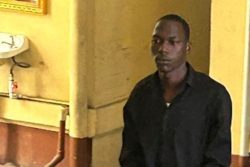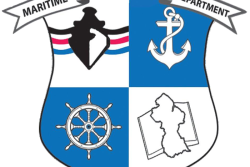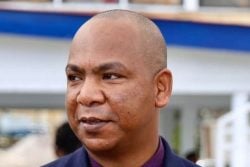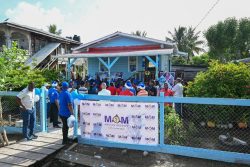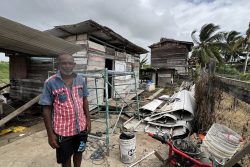Dear Editor,
The recent reports that the Ministry of Natural Resources (MNR) has commissioned “Consulting Services for Mineral Mapping Study of Guyana’s Mineral Resources (Gold Resources and Non-traditional Minerals)” stirred my interest as someone who has some familiarity with such work. On reading the Invitation for Request for Proposals (IRP), however, one is hard-pressed to reconcile the sketchy outline of the IRP with the apparent elaborations to the press by Minister of Natural Resources, Vickram Bharrat. To tie the pieces together, one would need to see the entire multi-year project document, which the MNR should release should one exist.
Notwithstanding, the project raises several concerns in terms of its conceptualization and deliverables, starting with the two smallest: (i) several deliverables cover what the MNR ought to know itself, such as “government policy and legal framework regarding mineral resources, investment climate and current situation, location, and nature of mining activities in Guyana”; (ii) much of the work identified in the IRP could be accomplished through capacity building at GGMC and through any of the number of cooperation agreements between GGMC/MNR and sister organizations, such as the one signed in 2019 with Chile, for less the cost.
More fundamentally, however: (iii) I would be surprised should our local small and medium-scale gold miners (one of the targeted groups) declare that they would benefit from a mineral map that shows the gold grounds already discovered in the mining districts. Our local miners look for gold by ground prospecting in known gold-producing areas. If “new” ground is discovered or if there is a “shout”, word spreads throughout the entire mining community. What purpose would a map serve that tells miners what they already know? In any case, much of the gold ground is already locked up by large claimholders, who are more interested in finding out how much gold lie on their own properties, rather than in a general mineral map.
(iv) The previous effort in this regard was the UN-funded 1968 report (A Guide to Mineral Exploration in Guyana by J.R. Macdonald, for those who are familiar) which gathered and reviewed all the geological field reports over the previous decades, plotted all the then-known gold occurrences, and presented the information in one convenient volume. This enormous effort is credited with driving the gold exploration boom in Guyana from the late 1980s, which eventually led to the discovery of the world-class gold deposit at Omai. Of note, however, is the fact that it was the foreign exploration companies that benefitted from Macdonald as they were the ones with the expertise to grasp the full significance of his geological assessments.
Before long, the Macdonald report had become “exhausted”—meaning all the historically-identified gold prospects had been thoroughly explored using modern techniques. To find new or undiscovered gold deposits, foreign exploration companies conducted a series of exploration reconnaissance projects covering massive expanses of Guyana’s hinterland, using airborne geophysics, regional geochemistry, and updated geological mapping and thinking. Nothing much emerged from this investment in terms of new large-scale commercial gold finds. The question then for the MNR is this: apart from (re)digitizing and re(integrating) this info, what more is the MNR project aiming to achieve in this regard? One hopes that effort is not wasted in repeating fieldwork already done and repackaging reports. (v) The IRP also speaks about non-traditional minerals – which would more naturally interest foreign mining investors. Non-traditional minerals refer to such so-called strategic and critical elements as lithium, cobalt, and rare earths.
Without seeing the MNR project document (should one exist), I think it would have been better to conceptualize this aspect of the project differently as follows: PHASE 1: based on the stated geo-data needs, fiscal incentives, legal and regulatory framework, etc., that large mining investors require, assess the current situation in Guyana and make recommendations to increase the country’s competitiveness as a mining investment destination. PHASE 2: design and conduct all necessary work for geological data collection (including fieldwork), processing, display, retrieval, and storage. Priority should be given to the unexplored and underexplored areas especially in middle and southern Guyana.
Sincerely,
Sherwood Lowe
